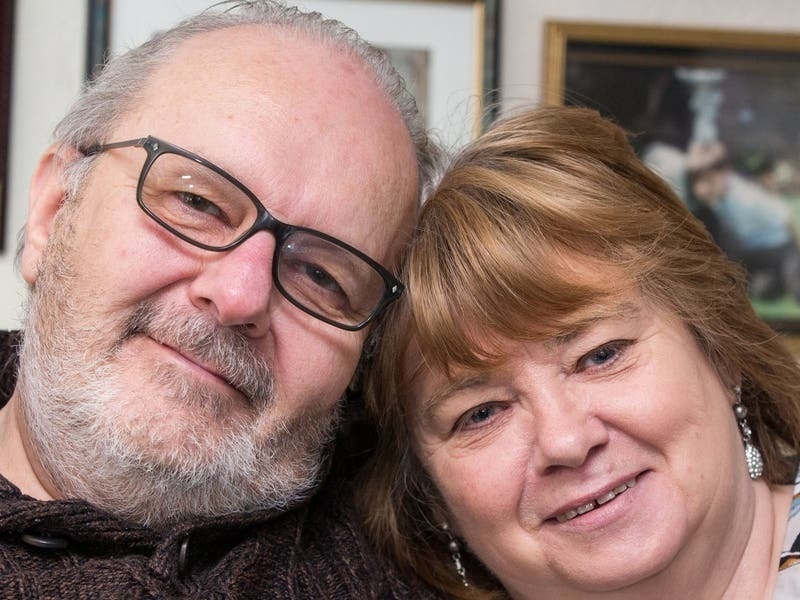In the first of a two-part series, the JEP looks at some of the Island’s larger schemes that never left the drawing board.
CHANGING the landscape of a small community such as Jersey can be a tricky business.
For some, the best way to improve the environment is to leave it well alone, while others support developing or redeveloping land to provide modern accommodation, offices or parking.
And with a limited amount of space in an Island of nine by five miles, the bigger the project, the greater the scope for controversy.
Here area few of the projects that never quite made it:
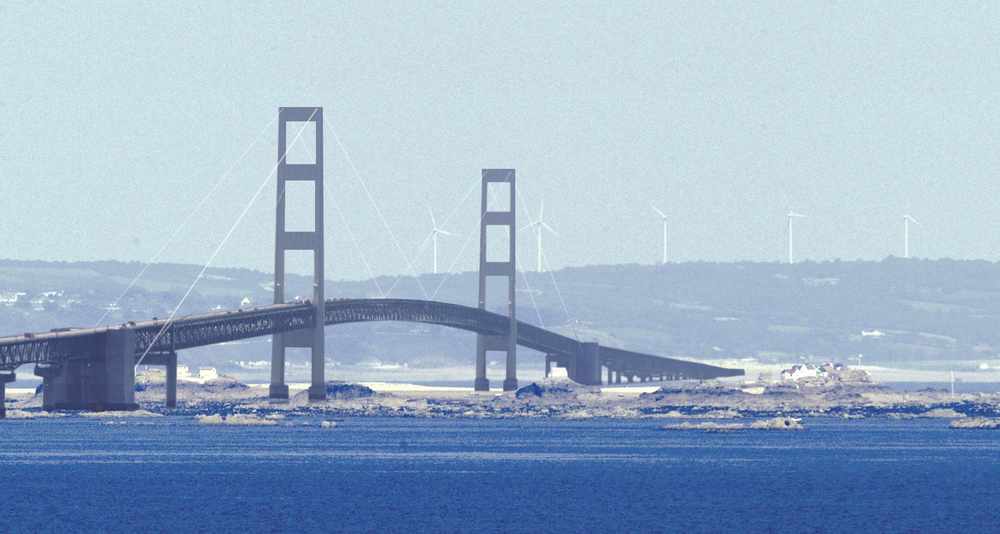
A bridge too far
PUBLIC infrastructure projects do not get much bigger than connecting one piece of land to another over the sea.
But in 2008 that is just what Jersey businessman Peter Walsh proposed.
He called for a bridge to be built to connect Jersey to France, allowing Islanders the chance to reach Normandy in around ten minutes, at a cost of £25 per car.
The allure of easy access to cheese, wine and huge French hypermakets proved popular with some, but the plans failed to make it past the conception stage.
The 16-mile structure, which the businessman predicated would cost £1 billion, also included a string of offshore wind turbines that Mr Walsh said would eventually net the States £120 million over 35 years in saved energy costs.
And according to his calculations, the hefty build cost could have been recouped by levying toll charges for different vehicles. The businessman said he anticipated toll fees would raise more than £40 million per year, with £1.3 billion being returned over 35 years.
The suggestion garnered attention in the national press, where Mr Walsh revealed he had meetings lined up to discuss the project with regional government officials in Normandy.

Still waters run deep
JERSEY’S Waterfront has been the subject of much controversy over the years, with Islanders routinely criticising parts of the area.
The controversial site could be very different today, however, had the States moved forward with proposals to relocate the Island’s ferry services to La Collette.
In 2006 a Council of Ministers-commissioned report recommended that all commercial activity be relocated from the Elizabeth Harbour to free up land there for residential development.
The report’s recommendations included creating a new passenger terminal, a redesigned La Collette basin to take some freight ships, building apartments around Elizabeth Harbour, adding bars and restaurants to the New North Quay and dredging a deep water cruise ship berth as part of the changes.
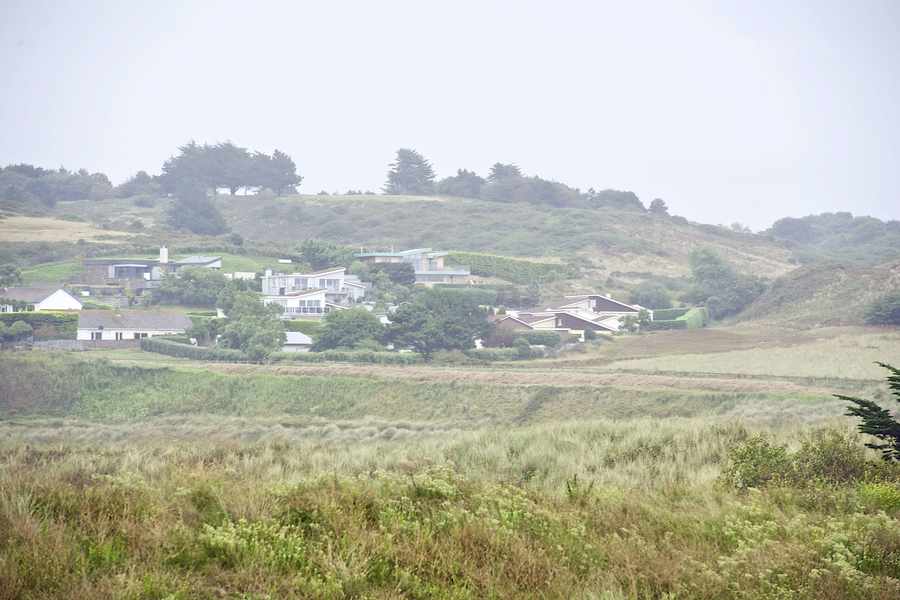
Sandy foundations
IN the 1970s Jersey authorities discussed the creation of a new town in the west of the Island.
Radically, plans emerged to build hundreds of homes on the sand dunes in St Ouen’s Bay.
Environmentalist Mike Stentiford, who remembered the suggestion, said: ‘It was a new town of about 400 houses that was proposed out in St Ouen’s Bay where the sand dunes are.
‘Then I think they realised they would be building on sand, which isn’t the best foundation.’

Maritime changes in the east
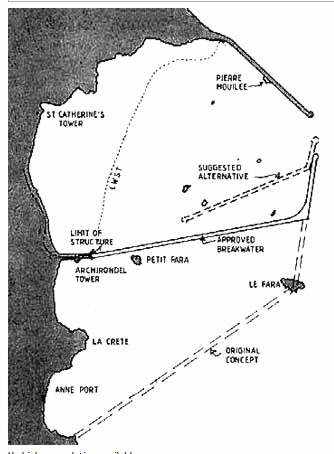
AS with many parts of the Island, war, or the threat of war, brought about changes to the east coast.
In 1840, amid fears of renewed fighting between Britain and France, Jersey sent a petition to Queen Victoria calling for the creation of a huge naval station encompassing Anne Port, Archirondel and St Catherine’s Bay.
Although the petition went largely unnoticed for several years, by 1842 the British government had begun to investigate Island defences.
A few years later in 1847 work began to build two huge breakwaters – a northern arm that still stands today as St Catherine’s Breakwater and a southern arm stretching from behind Mont Orgueil at Anne Port out to sea – to form a secure naval station.
While the northern arm went on to be completed, plans for the southern causeway were revised to start at Archirondel, linking the land with the existing tower in the bay, and stretching further offshore.
However, after the project to build the southern seawall was suspended, spiralling costs and improved Anglo-French relations led to doubts over whether the scheme should be continued.
The work, which was being carried out by an army of 1,000 men, was later abandoned, but only after the British government had spent £234,235 plus the cost of purchasing land. Adjusted for inflation their bill came to more than £16 million.
In an attempt to recoup their costs, Britain offered to sell St Catherine’s Breakwater back to the Island, which showed no interest in purchasing the structure.
It was eventually gifted to Jersey in 1876.
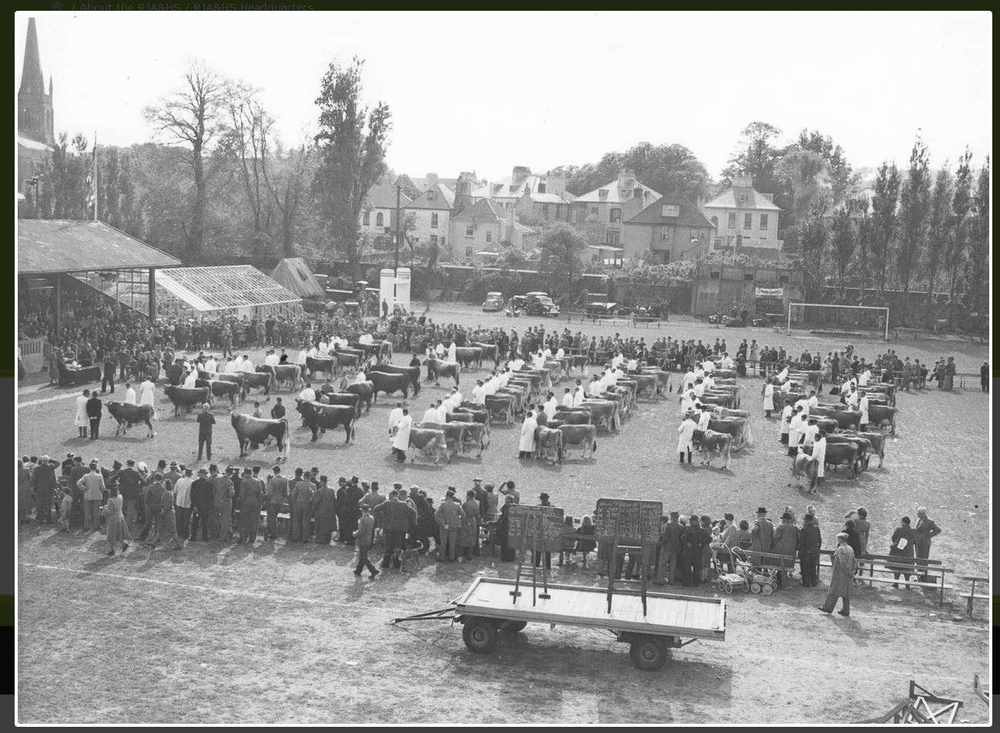
A call for stadium homes
THE home of Jersey football could be a very different venue had one suggestion come to pass in the mid 1980s.
About 30 years ago authorities discussed asking landowners the Royal Jersey Agricultural and Horticultural Society to ‘swap’ its Springfield Showground for a site at the States-owned Howard Davis Farm in Trinity in order to free the stadium for a housing redevelopment project.
While the IDC’s original housing project planned for Springfield was never advanced, the RJA&HS did eventually relocate to Trinity headquarters in 2000, close to Howard Davis Farm.
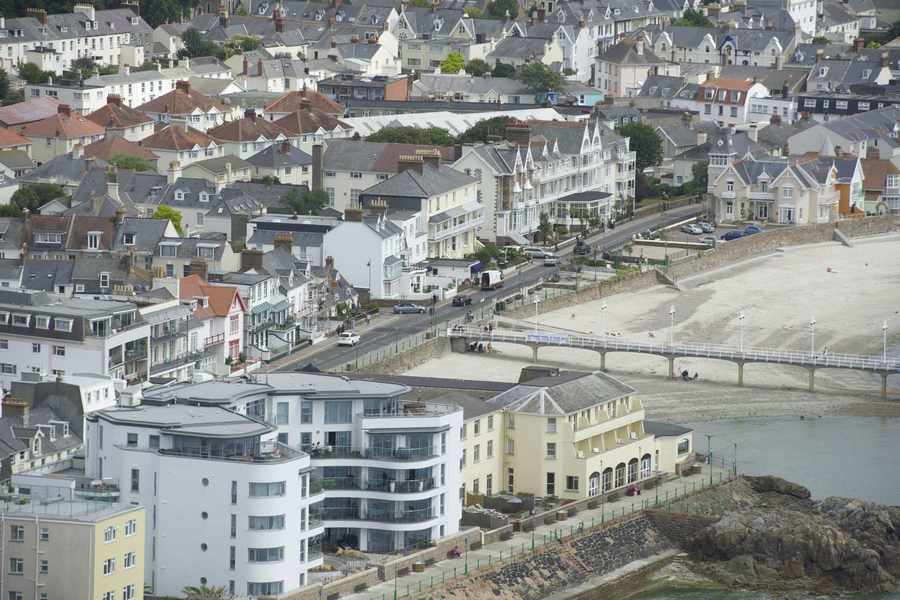
A pass on Havre des Pas
SEASIDE developments quickly divide opinions and in 1986 plans for a £30 million ‘marina town’ at Havre des Pas caused waves of public disquiet.
Hundreds of new homes were suggested for the area to improve what some saw as a run-down part of the Island.
However, Islanders, including, local historian Sonia Hillsdon, spoke out against the plans, arguing that building at Havre des Pas would swamp a ‘charming area of great historic significance’.
IN MONDAY’S JEP AND ONLINE: A south coast airport, a marina for Gorey and a dual carriageway from town to Noirmont…


